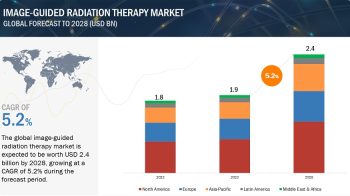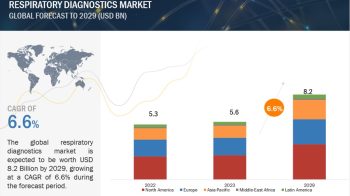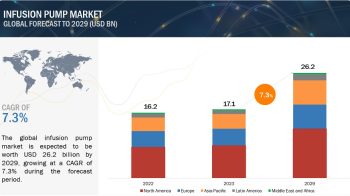Projected Surge in Revenue Generation:
The patient blood management market is projected to reach USD 15.3 billion by 2024 from USD 10.7 billion in 2019, at a CAGR of 7.4% from 2019 to 2024.
Major Growth Boosting Factors:
Globally, the demand for donated blood is increasing because of greater volume of sophisticated medical surgical procedures conducted and the increasing number of trauma cases due to road accidents. These procedures require blood transfusions to make up for blood loss incurred during the procedures. Thus, the rising number of accidents, trauma cases, and surgical procedures performed are contributing to the market growth, thereby increasing the need for patient blood management products.
Download PDF Brochure@
https://www.marketsandmarkets.com/pdfdownloadNew.asp?id=131352979
The blood transfusion segment of instruments to register significant growth over the forecast period
Based on product, the patient blood management market is segmented into instruments, accessories, reagents & kits, and software. The instrument segment is further sub-segmented into blood processing devices, blood transfusion devices, blood culture screening devices, diagnostic & testing instruments, and blood storage devices. Among these, the blood transfusion segment is anticipated to register significant growth over the forecast period.
Growth in this segment is attributed to the upsurge in demand for blood components across the globe and the increase in government initiatives towards blood donation. In addition, newly approved indications for apheresis treatment such as acute disseminated encephalomyelitis, autoimmune hemolytic anemia, and cardiac neonatal lupus will further supplement the growth of this segment.
The whole blood segment is projected to hold the largest share of the market, by component, during the forecast period of 2019 to 2024
By component, the patient blood management market is segmented into whole blood and blood components. The whole blood segment is expected to hold a major share of the market during the forecast period. An increase in the number of surgical procedures coupled with rising incidences of blood-related disorders that require blood transfusion during treatment are the key factors supporting the market growth of this segment.
Blood banks were the key end users in the patient blood management market in 2019
On the basis of end users, the patient blood management market is segmented into hospitals and blood banks. The increasing number of blood donations has increased the need for proper management of blood. Blood banks are the key end users for various blood processing devices, blood collection devices, and blood storage devices. The key factors attributing to the growth of the blood banks segment include the growing awareness about blood donations, rising automation in blood banks, and the increase in the number of blood banks in developing countries.
The Asia Pacific region is expected to register significant growth during the forecast period of 2019-2024
The patient blood management market is segmented into North America, Europe, Asia Pacific, Latin America, and the Middle East and Africa. The Asia Pacific blood management market is expected to register significant growth over the forecast period due to the modernization of healthcare infrastructure, increasing prevalence of chronic lifestyle diseases, and rising awareness about blood donation & blood safety. China accounted for a major share of the Asia Pacific market, owing to a large patient pool and favorable government guidelines to improve healthcare infrastructure in the country.
Request Sample Pages@
https://www.marketsandmarkets.com/requestsampleNew.asp?id=131352979
Key Players:
The major players in the market include Haemonetics Corporation (US), Fresenius SE & Co. KGaA (Germany), Terumo Corporation (Japan), Immucor, Inc. (US), B. Braun Melsungen AG (Ireland), Macopharma (US), bioMérieux SA (France), Asahi Kasei Corporation (Japan), Bio-Rad Laboratories, Inc. (US), Abbott Laboratories (US), Grifols, S.A. (Spain), F. Hoffmann-La Roche LTD (Switzerland), LivaNova PLC (UK), Danaher Corporation (US), Mediware Information Systems (US), Kawasumi Laboratories, Inc. (Japan), Haier Biomedical (China), Diatron (Hungary), and BAG Diagnostics GmbH (Germany), among others.


